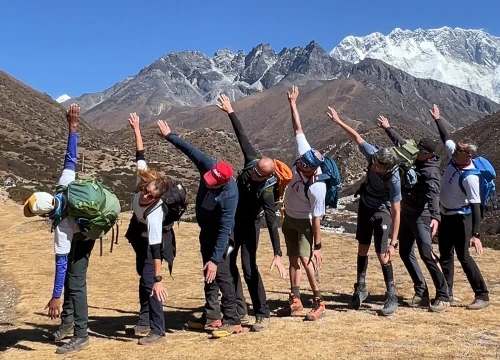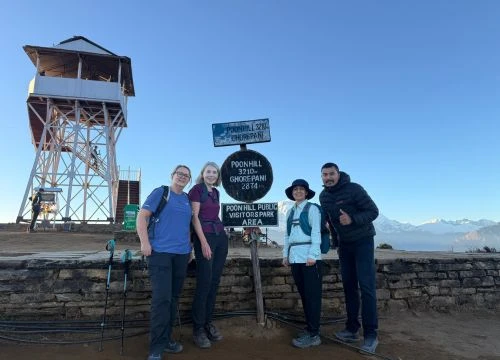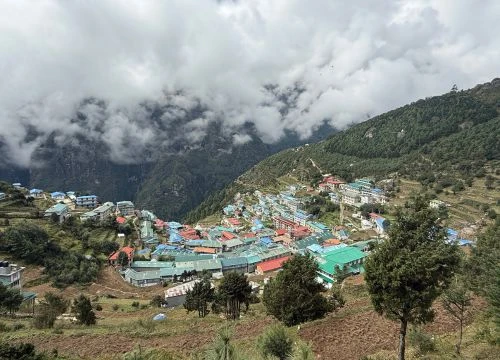Located in the heart of Nepal, Kathmandu Valley, is an undeniably colorful and culturally rich city. It has always been a center of history, art, and religious worship. Surrounded by the beautiful Himalayan range, this valley also accommodates the capital city of Kathmandu and other towns having high historical significance, such as Bhaktapur, Patan (Lalitpur). The valley captures a beautiful picture of ancient architectural styles coupled with traditional craftsmanship. Hence, a cultural city with most designated UNESCO World Heritage Sites.
Kathmandu Valley has a history of more than 2,000 years and has been a trade, religious, and cultural exchange center. Numerous significant traditions originated in Nepal. Kathmandu Durbar Square among several historic sites acts as one of main spot for cultural activities. The city's temples and shrines as well as palaces tell the story of their architectural richness. Another famous landmark of the valley is Swayambhunath Stupa, commonly known as the Monkey Temple. It is an important sacred Buddhist' site that offers spectacular city's views.
The Kathmandu Valley is not only historically and spiritually important but also remains an epicenter of Nepalese arts and crafts. Great displays of wooden intricate carvings, handwoven exquisite textiles, and stunning paintings. All these represents the artistry handed down through generations. Streets become alive with colors, music, and dance during local festivals like Dashain, Tihar, and Indra Jatra. Hence, attracting visitors as well as locals to the very core of Nepali culture.
Kathmandu Valley is an interesting place to visit to witness the diversity and richness of traditions of Nepal. Because this valley has a magical beauty that consists of natural beauty, historical monuments, and a living culture.
History of Kathmandu Valley
The history of the Kathmandu Valley is in itself a saga. It is an epigram of many dynasties, mythology, and cultural evolutions. The valley has been several types of civilizations for more than two thousand years. One of the most famous legends relating to the valley is that of Manjushree, the Buddhist deity. It is believed that Manjushree had cut out a gorge with his sword at Chobhar, thereby draining the lake that large covered the valley. This was to make this area fertile and habitable and making it suitable for early civilizations to grow.
The cultural and architectural character of the valley was molded largely by the Lichhavi dynasty. They ruled from approximately the 4th to the 9th century. While dominion by the Lichhavis emerged Hinduism and Buddhism as principal religions. Moreover. it also made the valley blossom as an epicenter of commerce and education. Numerous temples, palaces, and stupas were constructed during the reign of the Lichhavi kings. Many of which are still visible today, including the famous Pashupatinath Temple.
Following the decline of the Lichhavi dynasty, the Malla dynasty emerged and ruled the Kathmandu Valley until the 18th century. A golden age of art, culture, and architecture characterized the Malla period. Beautiful palaces, temples, and courtyards that are now emblematic of Nepalese culture were built under their rule. During their rule, distinctive forms of wood carving, painting, and sculpture has emerged. The Malla monarchs were renowned for their support of the arts. The Kathmandu Durbar Square, Patan Durbar Square, and Bhaktapur Durbar Square are enduring legacies of the Malla dynasty. With intricate woodwork and grandiose buildings that still draw admiration from visitors.
The Shah dynasty, founded by Prithvi Narayan Shah in the 18th century marked a new era in the history of Nepal. In 1768, Prithvi Narayan Shah conquered the Kathmandu Valley, unifying the smaller kingdoms into one centralized state. Thus beginning the Shah dynasty's rule over Nepal. Although the governmental system changed toward a more centralized monarchy under the Shahs, the Kathmandu Valley prospered as a result of this unity. Additionally, the Shah dynasty established a more structured style of government, which had a long-lasting effect on the political climate.
Through these three dynasties - Lichhavi, Malla, and Shah - the Kathmandu Valley underwent profound transformations. Each era leaving behind a unique cultural and architectural legacy that still defines the valley today.

Geography of Kathmandu Valley
Located within central Nepal the Kathmandu Valley creates a bowl-shaped geographical zone bordered by Himalayan foothills. The region exists at average heights between 1,400 meters (4,600 feet) and sea level. The three main towns of Kathmandu, Lalitpur (Patan), and Bhaktapur are located inside the about 570 square kilometer valley.
During geological ages the valley was a former lake basin. Formed after tectonic activity lifted the area to produce trapped water. As the ancient lake disappeared through drainage the lake dried up so the valley gained nutrient-rich deposits in its remains. The place retains effective agricultural techniques due of its fertile alluvial soil. Therefore, earning a position as a significant historical habitation region.
The Bagmati River together with its various tributaries serve as vital components for the valley's full functioning water structure. The rivers possess cultural significance to the region because many temples and ghats have been built along their banks.
The valley gets climate control from natural hills called Shivapuri, Phulchowki, Nagarjun, and Chandragiri. Apart from climate contro,l they do enhance the city's environmental beauty.

Major Attractions of Kathmandu Valley
Kathmandu Valley within Nepal's heart possesses treasures of cultural heritage and historical sites and spectacular architectural beauty. Visitors may get a taste of Nepal's distinctive legacy via the valley's colorful tapestry of traditional customs and contemporary influences. The UNESCO World Heritage site of Kathmandu Valley incorporates the celebrated cities of Kathmandu and Patan (Lalitpur) and Bhaktapur. These historic cities demonstrate vibrant festivals together with timeless monuments and impressive scenery.
Kathmandu Durbar Square stands as one of the valley's precious treasures at its heart. The historic square shows the Newar community's architectural masterpieces through its combination of palaces and courtyards and temples. Visitors can admire both the intricate wooden window carvings along with the Hanuman Dhoka Palace and the sacred Kumari Ghar which houses the living goddess Kumari. After the 2015 earthquake caused extensive damage to the site builders successfully restored it to preserve its essential character resulting in an atmosphere that lets visitors encounter the historical richness of this beautiful landmark.

Visited by countless people each year Swayambhunath Stupa also known by "The Monkey Temple". This ancient stupa stands as one of the nation's most distinguished places of worship from its hilltop position in the valley. Esteemed as a symbol of enlightenment, this site maintains its recognizable white dome structure featuring the all-seeing eyes of Buddha and a golden spire. Visitors scaling the prayer flag decked steep staircase can experience spiritual serenity and gain breathtaking views of the valley after climbing up through the prayer wheel area.

The city of artisans known as Patan displays a traditional Newar architectural design masterpiece at its Durbar Square location. Inside the square stands the Krishna Mandir temple that worships Lord Krishna who exists exclusively in stone construction. The Patan Museum exhibits select artifacts from across the centuries that showcase the cultural heritage of this valley to visitors within the walls of a former royal palace building. Traditional handiwork can be found through workshops throughout Patan’s bustling streets. The artists in here produce exquisite metalwork and wood carvings plus statues of local customs.

As the third settlement of the valley, Bhaktapur earns its reputation as a living archaeological site. Durbar Square holds UNESCO designation for its 55-Window Palace, together with Nyatapola Temple's impressive five-story structure. Apart from that, Pottery Square which stands as a place of clay pot handmade creation. Travelers yearning to experience historical times will find tranquility in Bhaktapur because of its perfect preservation and complete absence of automobile traffic.
The Pashupatinath Temple remains a must-see landmark along the banks of holy Bagmati River. Lord Shiva receives countless Hindu devotees from worldwide hindu communities at this temple. Visitors can explore this temple complex which combines refined pagoda architecture. With its role as religious hub to witness Hindu funeral ceremonies along the river and learn about their deep spiritual practices. Hence, this temple stands as one of the most revered Hindu shrines in Nepal.

The largest stupa in the world Boudhanath Stupa welcomes pilgrims who practice Tibetan Buddhism. Surrounded by market stalls and monasteries the stupa's enormous mandala pattern attracts visitors. Visitors along with pilgrims perform spiritual stupa walking while spinning the prayer wheels at this holy space.
The Kathmandu Valley provides both pilgrimage sites and lush hills with hiking trails which allow visitors to escape the active city life. Nature lovers find perfect enjoyment visiting Nagarkot and Phulchoki because these locations offer spectacular views of Himalayan peaks.
It shows diverse cultural wealth woven together with its natural picturesque setting. The valley combines Nepalese history and spirituality through its royal squares, serene stupas, ancient temples and bustling local markets . Therefore, visiting this mesmerizing region offers an unmissable adventure which exposes travelers to true Nepalese history.
People and Culture

The Kathmandu Valley displays Nepal's abundance of heritage through its active mix of ethnic groups who celebrate festivals together with cultural practices. Various ethnic groups including Newars and Brahmins and Chhetris and Tamangs make their home in the valley which functions through traditional customs and respects diversity. Through their outstanding arts and rituals along with exceptional architectural masterpieces the indigenous Newar residents actively protect the distinctive cultural heritage of this valley.
Each festival in these parts acts as a vital expression of daily existence so the traditions run deep in origin tied to religious values. Residents throughout Nepal observe Dashain and Tihar as major Hindu festivals through shared meals and religious rituals along with communal celebrations. Buddhists from all walks of life gather for Buddha Jayanti to honor the lessons of Lord Buddha. Indra Jatra stands as one of the Newar festivals found only in the valley where people enjoy dances musical performances and a goddess Kumari chariot procession. The cultural wealth of the valley widens through traditional dance performances and rich ceremonial attire while holding classic customs from generation to generation.
Why Most People Visit Kathmandu Valley?
The Kathmandu Valley stands apart as a distinct travel destination because it maintains perfect alignment between traditional heritage along with powerful cultural dynamics and ancient spiritual values. Indra Jatra represents grand traditions during which local residents celebrate a living goddess as the primary attraction in a space unique to this land. Hidden treasures exist beyond its famous temples and stupas throughout the valley since ancient arts and cultural practices quietly sustain themselves in inconspicuous courtyard locations.
Conclusion
In essence, in the Kathmandu Valley, traditional customs have coexisted happily with modern urban life with spiritual and cultural elements. The valley's enduring structures, grand festivals, and imaginative artworks leave a lasting impression on visitors.











